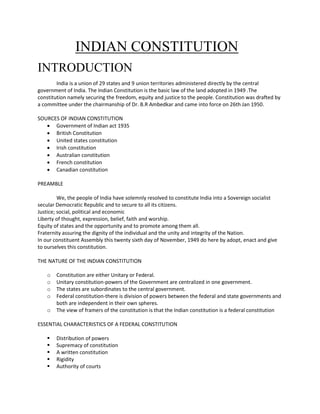The Indian Constitution is the longest written constitution in the world, adopted in 1949. It establishes India as a sovereign, socialist, secular, democratic republic with a parliamentary system. The constitution has a preamble and 448 articles grouped into 25 parts, with amendments. It draws from several sources and establishes three branches of government - legislature, executive and judiciary. Key features include fundamental rights, directive principles, federal structure, and an independent judiciary. Administration is carried out by the central government and state governments, with a three-tier structure of local self-government in rural areas.








